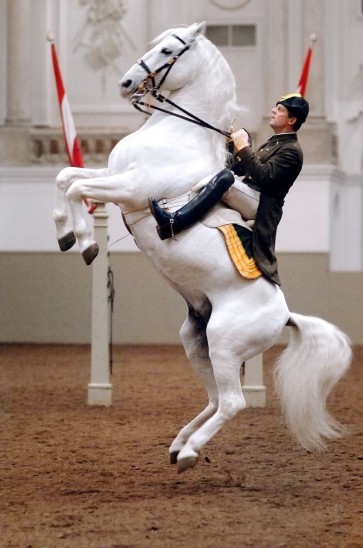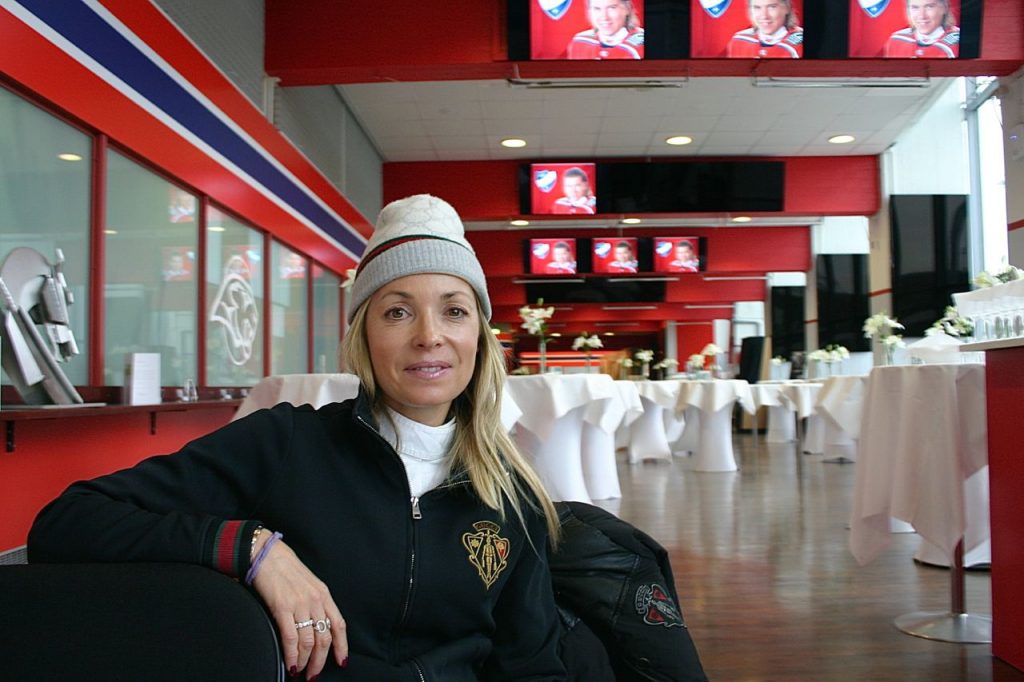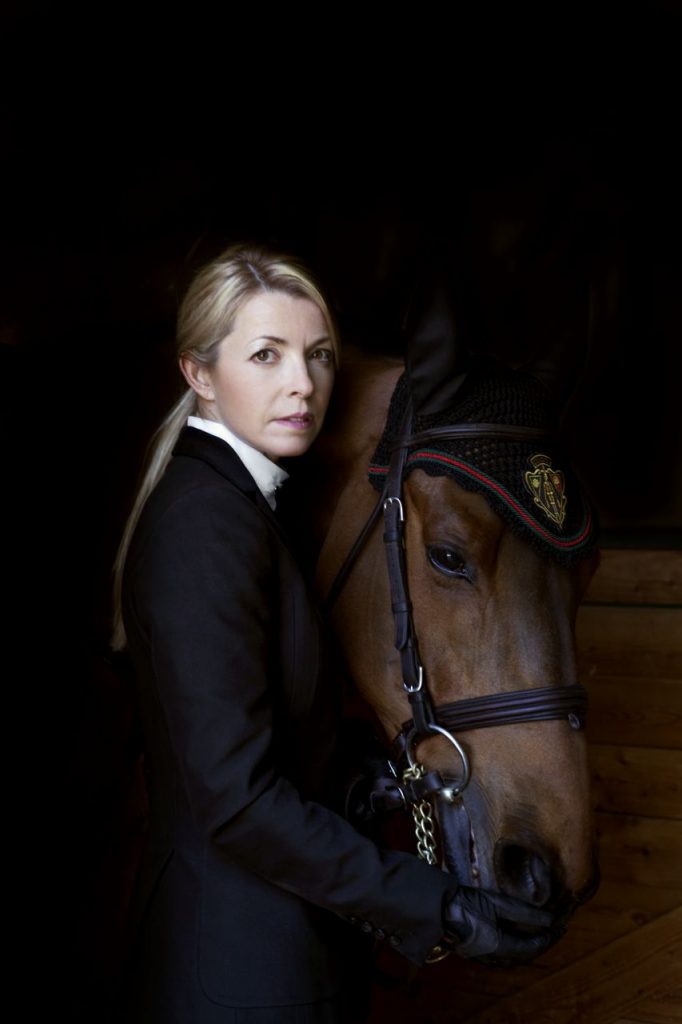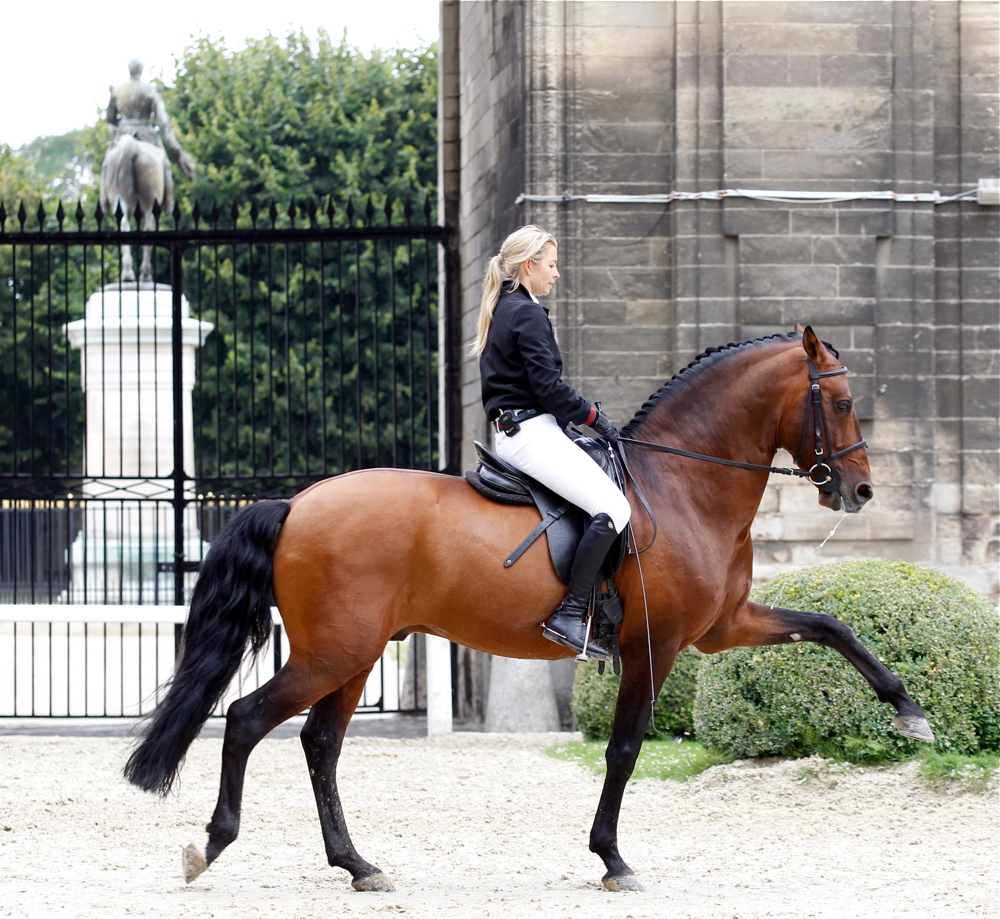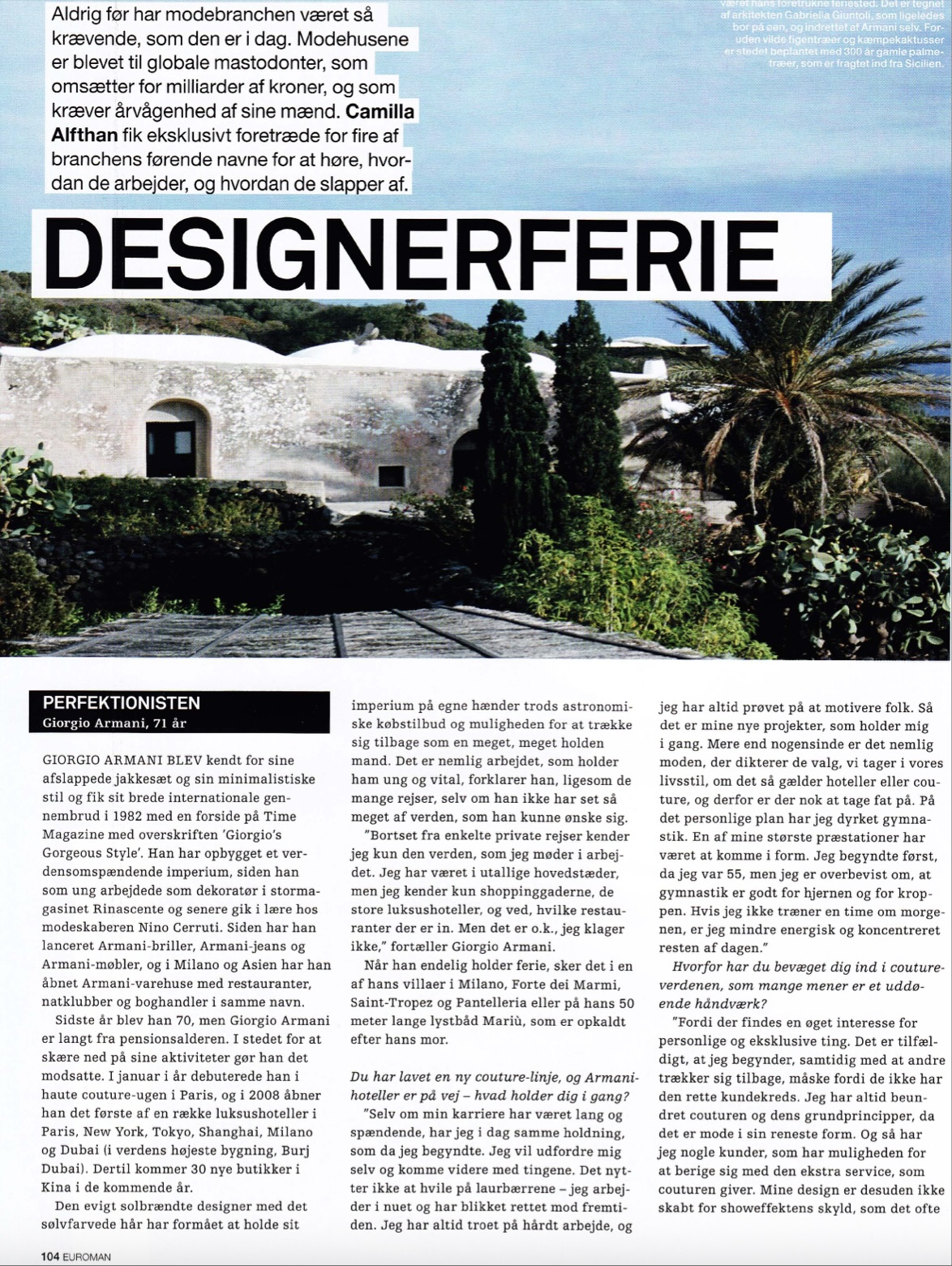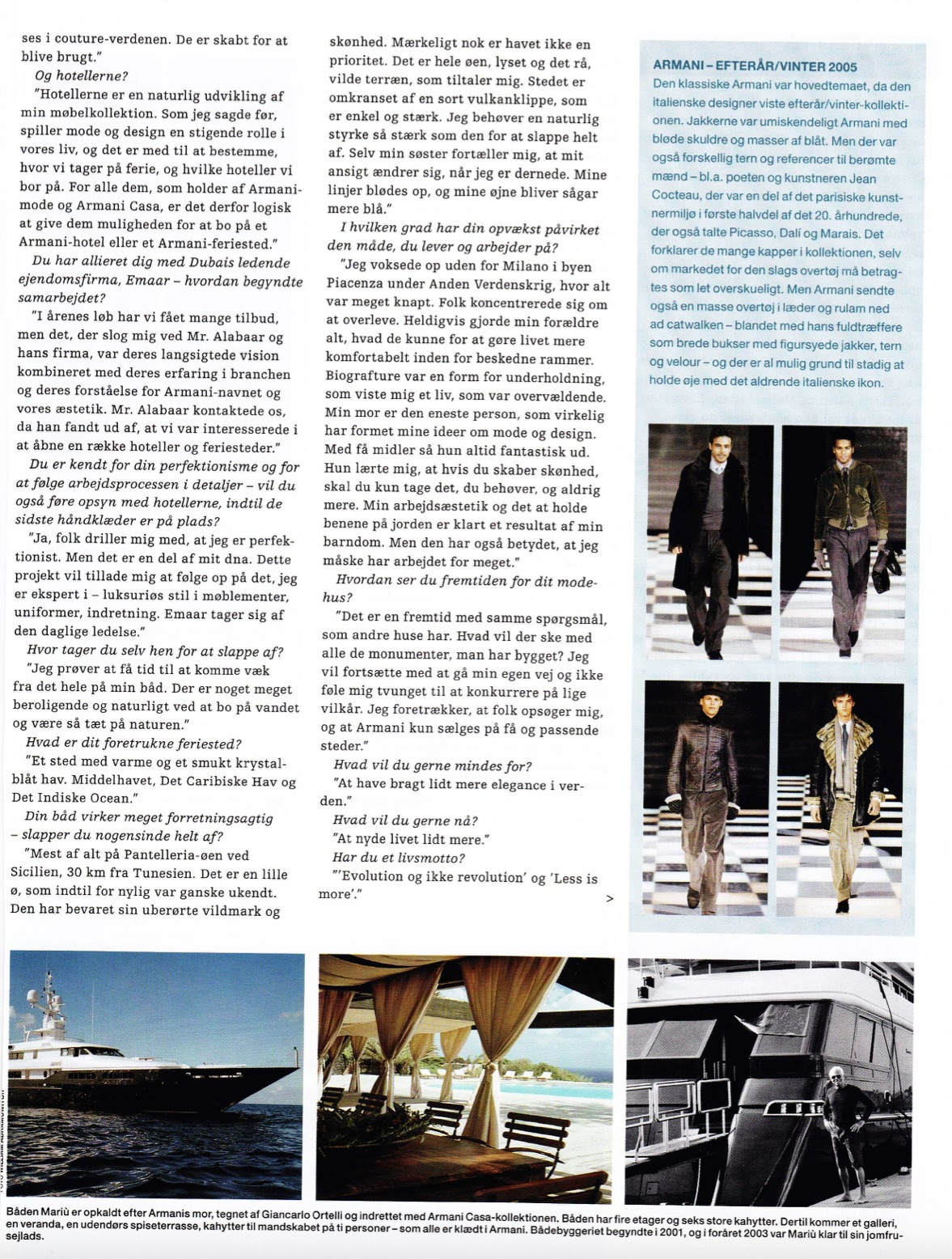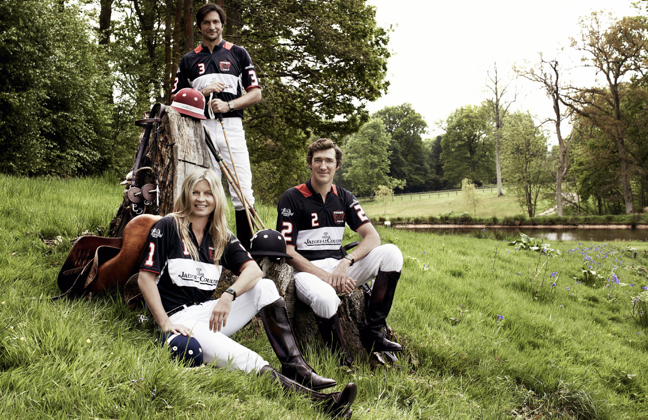Lippizaners in Hofburg
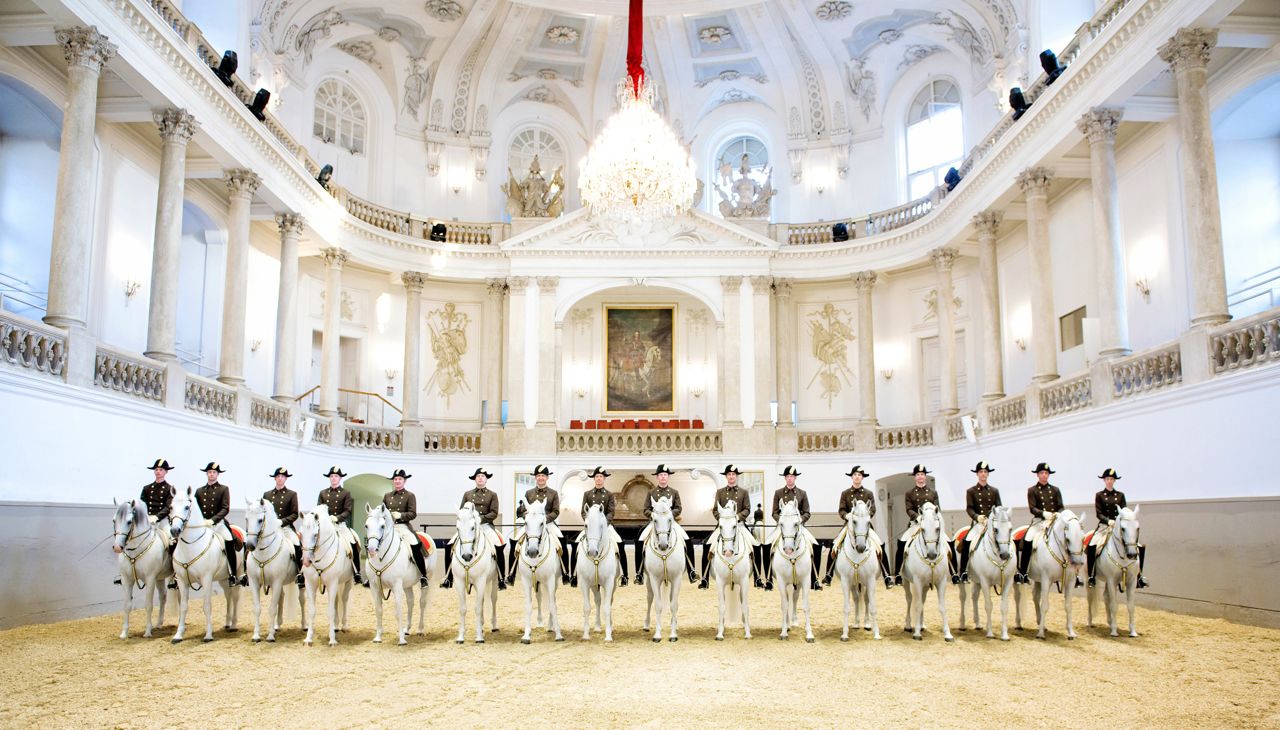
The Spanish Riding School has lived through wars and fires and, miraculously, survived them all. As the legendary school celebrated its 450th anniversary we travelled to Vienna to experience a mythic place.
By Camilla Alfthan, all photos courtesy of The Spanish Riding School
IT IS IN THE HEART of Vienna that the highest form of classical riding takes place in the baroque building of Hofburg underneath the finely chiseled ceilings with crystal chandeliers. Here, riders still bow in front of an oil painting of their former Emperour who founded the capital’s traditions for music and theatre. A passionate horse lover, Karl VI continued his predecessor’s popular horse ballets – Rossballetten – which were also a fashion at the Italian courts.
The horses were the same, light-footed Lipizzaners that we know today – stallions who are born dark brown and raised in the mountains of Piber, as they gradually go from dappled grey to snowy white as they grow older and learn to master the most demanding exercises.
Contrary to what one might think; the most expressive of them all were originally created for war fare. When the horse reared from the ground in a levade it shielded its rider from frontal attacks. In a capriole – where the horse flies high above the ground with all four legs in the air – it created extra space when the rider was surrounded by foot soldiers.
When two noble men met in a fight they approached one another in several leaping courbettes.
For the past centuries, the exercises have been a testament of Austria’s illustrious history performed as a horse ballet to classical music. The Spanish Riding School is not only the oldest riding academy in the world – it is also the only place where the high school of classic horsemanship has been cherished and maintained for over 430 years.
As an important part of Austria’s cultural heritage the school receives thousands of guests for its weekly performances.
One of the reasons for its huge popularity is that it has survived countless ordeals – from having it’s buildings destroyed during the war against the Turks to surviving earthquakes and fires during which the horses were evacuated as Austria’s most treasured works of art.
The latest dramatic rescue took place during the Second World War and towards its end, it was General Patton who assured the survival of the academy at a time when its role was purely connected with a cultural pride.
HISTORY AND HERITAGE
Nowadays, the Lipizzaners only travel when they’re on tour to perform in front of large audiences.
One of its riders is Herwig Radnetter, 54, who grew up in the eastern part of Austria near the Hungarian border. Horses were always a part of his life. His family were saddlemakers and his grandfather was in the cavalry. His father rode horses and when he was seven or eight, Radnetter saw the Spanish Riding School perform for the very first time.
“I knew I wanted to do the same. It was simply beautiful. It opened up a way of working, riding and making a living with horses,” he smiles.
Aged 15 Radnetter left his family to become a part of the historic school. Today, he has specialized in doing the levade in the saddle and on a short hand rein.
“First we learn all the exercises and then we specialize,” he tells.”We each have seven or eight horses to train so it’s important to have a good mixture of young, medium and fully trained horses that we can use for the presentations.”
“If a horse doesn’t want to do a levade or a capriole there’s no way you can force it.”
Work is rigorous and begins at seven o’clock every morning. As the Lippizaner is a little slower in maturing than other breeds the horses are started at the age of four. They live longer than most horses and the oldest performing stallions are around 25. They’re not as big as other breeds which means that the riders can’t be any taller than around six foot.
Their gaits are also a little bit higher than in traditional dressage horses which is why they are rarely seen in international competitions.
The exercises of the Spanish Riding School, however, go beyond any classical dressage programme and the horses thrive on it.
“If a horse doesn’t want to do a levade or a capriole there’s no way you can force it to do so. That’s why it is so important that we train them honestly and carefully. We totally depend on them,” says Radnetter.
While the Lipizzaners originated from the Lipizza stud in Trieste during the time of the Austrian Empire they are now bred in the Austrian Alps in Piber where there are currently around 250 horses and foals.
“The place is beautiful – the horses grow up in 1,600 meters of altitude and that is a part of the reason why they are so strong. There are few injuries in their legs because they’re out in the mountains all day long,” tells Radnetter who trains the stallions in the same way as generations have before him.
When they come down from the mountains at age four, they are lounged and learn to get used to the rider’s weight. They walk, trot and canter and afterwards; there’s the selection of the horses that are assigned to the different riders. From here on they stay with the same rider until they retire. Radnetter’s personal favourite is Conversano Tiberia.
“Our bond with the horses is very strong. Just consider how much time we spend with them – about 20 years with the same stallions six days a week. So it becomes a very strong relationship. They are a part of our lives.”
Riders in the Hofburg, photo © Stefan Seelig
“In the beginning we all start the horses from scratch. Then as you get older you don’t have to sit on a fresh horse anylonger. But you’re responsible for your horses and you make decisions for the training,” tells Radnetter.
When they’re on tour it is the mutual understanding between rider and horse that keep the performances smooth.
“They’re so well trained and they know us so well that they don’t mind travelling and showing in different arenas. Sometimes the first performance is a little different because the sounds of the audience are different. The arenas can be very loud and people sit closer so the horses pay more attention to them and that’s a challenge. They’re living animals and every performance is a challenge. If they make mistakes they are minor and people don’t notice them. “
“The horses definitely know when they have been doing something right. When we do the shorthand rein we treat them right after they succeded with the exercise. When we sit on them we pat them and they just know.”
Currently, the oldest rider at the academy is 65. As for Herwig Radnetter, he hopes to keep riding for as long as possible.
“When you bring a young horse into a performance for the very first time and you find out how the training went…that’s the moment when you have to prove everything that you give. If it was good or not. If it was good it is always a highlight.
Every horse who does a good job and who enjoys it is a highlight. Riding in in front of big crowds are highlights.
My best time of the day is when a horse went well and when he learned something new.”
A Levade by Herwig Radnetter, photo © Michael Rzepa
Unforgettable!
QUESTIONS FOR THE CAPRIOLEUR
Herbert Seiberl
Why did you chose to specialize in this field?
“That was a coincidence. The first horse I started to train by hand was very able in this particular section and so I stayed with it. That horse was Siglavy Theodora II.”
How do you make a capriole – what are the technical steps?
“We start by teaching the horse the Piaffe from the ground, followed by letting it kick out on demand, also without a rider on its back. Once the horse understands this, it has to learn the same with the forehand following a certain gesture or touch. When the horse is finally able to do both at once, the change from doing it by hand to doing it with a rider is easy. Here, you first let the horse perform the Piaffe and out of that it carries out the jump on command. Some react to the click of the tongue, others, like my horse for example, react to a command by the hand.
You have to try several ways to find out what works best; the horse usually shows you the easiest way.”
How long does it take to learn ? And how many tries until you succed?
“Depending on the horse it takes 3 to 6 years to learn.
Horses are animated beings with a free will and not machines; even horses that have already completed their training don’t always do what we want them to. It takes a countless number of tries, a strong relationship between horse and rider, patience, affection and – above all – treats, to make an exercise work.”
What was your feeling the first time you tried it ?
“Unforgettable.”
THE ACADEMY
The first horses were described in Austrian literature in 1550 as having roamed at a “Rosstummelplatz” on the current St. Joseph place. Later, Emperour Leopold I launched the colourful riding carrousels where horses would perform to music. Wars ravaged the riding hall and in 1729 Karl VI decided to build the Hofburg Palace as a symbol of Austria’s victories and imperial power.
In 1895 it was decided that the beautiful building, with ceilings that rise 17 meters above the ground, should only be used for horses. The existing directives which describe the purpose of the school were written by Oberretiter Johann Meixner and Feldmarshall Franz Holbein von Holbeinsberg.
A minimum of eight riders are needed for a performance. In 1925 the School performed for the first time outside the borders of Austria with a show in Berlin, and in 1927 it travelled to London and Aachen, which helped make it world famous. Training however ceased during the Second World War and did not begin until 1955 when the Lipizzaners were finally brought back to their home in Vienna where they have remained ever since. While only stallions perform for practical reasons, the school opened up for women riders in 2008.
THE LIPIZZANERS
The horses originated from the Iberian Peninsula during the 16th century as a cross between Spanish, Arabian and Berber horses which were later bred at the Lipizza stud in Trieste. There are six burn marks that symbolize their founding fathers – waves for Pluto, a stallion born in 1765 in Denmark; a country surrounded by the sea. A Neapolitan sword lowered in a greeting for Neapolitano and an arrow for Siglavy symbolizing the stallion’s Arabic origins. A crown for Maestoso and a Neapolitan coats of arm for Conversano where the first stallion came from Napoli. A square for Favory – the stallion from the Kladruber stud farm.
From the beginning the horses were not only selected by their exteriours but also by their interiours. One for its gallantness another for its intelligence. Some come from a family of caprioleurs – an exercise which demands a great deal of temperament. Others will instinctively rear – those, with a talent for levades or courbettes.
THE MUSIC
The music was always an important part of the Spanish Riding School and performances would not be the same without it. From the eight young stallions who open the show to Riedinger’s Festive Entrance – to Mozart’s Symphony No. 40 in G minor which is played during the Pas de Deux where two stallions perform a Piaff in synchronized harmony as mirror images.
Boccherini’s delicate menuet accompanies the Work by the hand which prepares the horse for the most difficult exercises. The impresssive Capriole is performed with Johan Strauss’ imposing Wienerblut.
For the final quadrille, the choreograhy is in perfect harmony with the works of Chopin, Bizet and Riedinger.
While the music helps the horses and the riders perform, it also helps the audience to understand and fully appreciate the exercises. When the riders exit the stage to the festive sound of Prince Eugen’s March they are the living images of a bygone era which has been preserved as Austria’s most precious jewel.
Riders below the painting of Emperour Karl VI who continued the traditions of the Academy and built the Hofburg in the heart of Vienna.
The 450th celebrations take place at Hofburg in July and will feature the show, Piber Meets Vienna, quadrilles of 12 horses and the impressive Imperial Fête with ballet performances. For more information go to www.srs.at © Stefan Seelig
Unvergesslich!
Warum haben Sie sich entschieden in der Kapriole spezializiert?
“Das war ein reiner Zufall. Das erste Pferd, mit dem ich selbst begonnen habe, Handarbeit zu praktizieren, hat sich dafür besonders geeignet – und so bin ich dann dabei ‚hängen‘ geblieben. Das war Siglavy Theodora II.”
Wie lässt sich eine Kapriole zu machen – was sind die technischen Schritte?
“Begonnen wird mit dem Erlernen der Piaffe an der Hand, aus der heraus wird das Streichen (Ausschlagen nach hinten) ebenfalls an der Hand probiert, hat das Pferd diese Lektionen verstanden, versucht man es vorne wegstreichen zu lassen und es letztendlich auf eine Berührung anzulernen, die es dazu bringen, beides gleichzeitig zu tun. Wenn das Pferd sich dazu eignet, dann ist der Umstieg auf Sitzen auf dem Pferd leicht. Hier piaffiert man das Pferd zunächst und daraus entwickelt sich der Sprung auf Kommando bzw. Berührung. Manche springen auf Zugenschnalzen, meiner z.B. reagiert auf meine Hand. Es ergibt sich aus einer Spielerei mit dem Pferd heraus, worauf es reagiert; das Pferd zeigt einem schon, wie es am einfachsten ist.”
Wie lange hat es gedauert um zu lernen? Und wie viele versucht haben Sie zu machen, bis Sie Erfolg?
“Je nach Pferd zwischen 3 und 6 Jahre. Pferde sind Lebewesen und keine Maschinen, selbst ausgebildete Pferde machen nicht immer, was man will. Es stecken unzählige Versuche dahinter, eine starke Beziehung zwischen Pferd und Reiter und viel Geduld und Zuneigung und natürlich auch Belohnungen.”
Wie haben Sie das Gefühl zum ersten Mal ausprobiert?
“Unvergesslich.”
©
Busy rider
Always on the go somewhere, Edwina Alexander-Tops is one of the busiest riders on the show jumping circuit – whether it is travelling to shows every weekend or representing luxury brands as an ambassador and designer. We had a chat with her in between classes at the Helsinki Horse Show.
By Camilla Alfthan
WE SEE YOU every weekend at different shows around the globe. How do you keep up ?
It’s hard. You have to be pretty organized with everything at home. It’s a little bit of a pattern that you get into; a routine, and you just get used to it. What keeps you going is having good results. I have some interesting horses coming up and I love a challenge and that’s probably what keeps most people motivated.
Since I’ve been doing the sport at a high level – which has been more than eight – ten years now – and travelling a lot – it’s got more and more. Last year I counted that I did 46 shows in the year. They used to have a period when January was not so much and you’d start the second week of February but now it starts straight away. I have from now and until March every weekend a competition.
How did it get to be like that?
The problem is the way the ranking system works; it kind of pushes you to have as much as possible eventhough they say they’ll have the best 30 results.
There’s so many riders now, and so many who want to be in the top, which is great, but there’s a lot of shows and it’s not just hard on the riders but also you need enough horses to rotate, you need enough people to be there and not get too tired because they travel all the time.You need good grooms and you need good support behind you, good people at home. I have ten horses and two riders, two grooms and one on the road and one helping in the office, so six people, not including Jan, to manage and be on top of things when I’m not there.
You’re also involved in fashion.
I like it, I’m someone who gets bored very easily so I like to keep going, and I have Gucci and also Jaeger-LeCoultre and interviews and photo shoots, functions and dinners, I have to do for them, which is quite nice because I meet a completely different world of people.
I love fashion and being involved with Gucci, I’ve been busy putting together a new equestrian collection. We did the last collection three years ago and I’ve just done an update for a whole new collection that I should have in the next month or so, just for me.
I went a few times to Rome and just looking at all the technical materials and understanding it.
They haven’t had much experience in the sports side of it so it was nice to have a good mix of my knowledge of what kind of clothing we need relative to the fashion world. I went to the opening of Gucci museum a few years ago in Florence where they showed their history with horses etc. It’s changed a lot and its gonna keep changing. Frida rides and understands it very well.
“I love fashion and being involved with Gucci and I’ve been busy putting together a new equestrian collection.”
There’s more fashion now in the sport.The materials that we use now are a lot different. I think its good to still keep the classic look that we have with the riding jacket but it’s also time to have a little bit change. Some brands have gone one way, with a little bit too many sparkly things but I guess that’s just a matter of personal taste
So basically, you’re designing things you can wear in and off the saddle.
Yes, there’s a casual look to it. I think it’s opened up a lot of doors from outside which is really what our sport needs; we need people to want to understand more about our sport. There’s a lot of celebrities riding, Jeniffer Gates, Charlotte Casiraghi, Jessica Springsteen, which brings a lot of different media attention. I know from my side I do more fashion magazines. People are not going out to buy a horse magazine, to read about fashion, so it’s a limited world within the horse world and it’s great to bring that attention.
It’s amazing that there’s so many people outside somehow related to horses, they’ve ridden before or they’ve got a friend that rides or a friend that breeds, or someone who owns race horses. There’s always a connection, and I’ve come across that so often which I think is why our sport is huge and it reaches out to so many different people. People in general love horses and if you see a lot of the big brands there’s in some way a connection with horses.
Edwina in Helsinki, where the ice hockey arena once a year becomes a show jumping arena. Ph. C. Alfthan
What is in your stable now?
I’ve got some interesting horses. Fair Light is going to jump the Grand Prix today and tomorrow we have the World Cup. She was very good in Oslo and she was placed in the Grand Prix, so she’s coming up and I think she’s very interesting. I just need to take it a little bit slowly with her. Then I have a very good mare that has been out a little while and she’s back again, she’s 11, her name is Tequila, and I think she’s going to be one of my best horses. I have one very good seven-year old, I have a good eight-year old, and both are relatively new horses. Ego is there mainly for the championships and the Global Tour, we’ve had a great year, though we have to learn to go faster. Guccio is back now, he’s going to start in Verona and of course Chappie and my new 7 years Clinton which I’m very excited about. I’m very fortunate to have my horses and the support from Jan.
Does Jan find them for you? How do you work together?
We work together a lot, sometimes he goes to look at a horse, sometimes I go, or we go together. People send horses to us. But yes, we know what we both like and what suits me, though it doesn’t necessarily have to suit me. He’s also away a lot, now in Morocco training the boys there for Qatar so he’s very busy with the Global Champions Tour.
The GCT is called the F1 of show jumping; did he know it would evolve like this?
Jan has incredible vision, he believes in what he thinks, and he never ever gives up. He always has a goal and I’ve never seen him not reach it. It might take longer than he expected but he always gets there. I know that this was the idea of the Global Tour, he’s had this idea many years before he started and it was just a matter of putting the pieces together.
We started in 2006 with just six shows and now it’s accumulated to 14 shows so it’s amazing. I think there’s a lot of really exiting plans to happen in the future so I think it’s going to develop the sport to a different level and that’s what we need. It’s been so long at the same place and the value of the horses are going up therefore the prize money needs to go up as well. And then you have more people investing in the sport and more people who want to keep horses for riders. And riders can actually now have a good income and make a living out of it which they couldn’t do before.
I remember Aachen where the Grand Prix used to be 150,000 euro and when the Global Champions Tour put their limit higher they had to go higher, too, and now they’re up to a million. So it’s really fantastic because it’s not only just about the Gobal Tour; it’s pushed the rest of the sport.
The only thing in my opinion that there is a weakness is the indoors. There’s not enough money and you still have to jump as much so that’s another aspect of the sport that needs a lot of improvement. For sure there are some fantastic shows, like La Coruna which is 500.000 for the Grand Prix, and Geneva which is 350,000 so it’s already starting to come up a lot and that’s great. I think Jan has revolutionized everything.
There’s also a lot in a horse for people to connect with.
Yes, and it also an interesting sport because it’s a lot about combinations, putting the right horse with the right rider and having a great match; you know these special combinations like Shutterfly and Hickstead; these combinations that are unique.
And also the fact that as a rider you’re competing together with another athlete which is the horse. They also have a brain, you train them in your way and that’s another side to the sport that I think people don’t understand.
And then there’s the fact that men and women compete on the same level which has opened up a lot of eyes to the public. The reason why women are now more succesful than they were maybe 15 years ago is due to the change of the breeding, it’s allowed women to ride with much more finesse – the sport is generally more about finesse than strength.
“The horses also have a brain; you train them in your way and that’s another side to the sport that I think people don’t understand.”
The style of horses has changed a lot, people are breeding more blood into them, because everything is changing, the footing has changed, the jumps have changed, the equipment has changed, and everything is getting much more sophisticated. So we need different horses as well.
So how do you make your horses – how do you train them?
I think it’s important to have a good bond with a horse. They are extremely perceptive to people. They feel when youre not happy with them, or when you’re nervous, they’re so sensitive and so vulnerable.
It’s very important for the horse to trust you. I wish I could spend more time with my horses. I love them all and that’s important, that they feel that you appreciate them and respect them. They’re not all machines, Shutterflys or Itôts, they all have their ways and they like people. Some are better athletes, some are faster, some are slower, some have better reflexes, some don’t have quite as much push or power.
They’re a lot like people in that way and they all have their days. Sometimes the mares are not happy and the stallions don’t want to do anything. So it’s really about understanding the character of the horse. One of the most important things in a horse is the attitude.
You seem very involved in many aspects of the sport – we often see you in discussions with other riders.
It’s important that riders talk together about the sport and how it needs to develop because in the end it’s our career . I think the riders must be a little bit stronger about staying together for the sport. There’s a few issues at the moment and I don’t think the riders have a lot to say.
In the world championchips, there were a few top rider-horse combinations that had already decided not to jump the final if they qualified already prior to the event. I think this says a lot in itself and there is obviously a very good reason why. Everyone appreciates to win the gold medal and it’s an amazing achievement and everyone has a lot of respect for the champions.
But talking about the welfare of the horse and then having our horses jump so many rounds really does take its toll on the horses. After such championships there are not many of the horses that are in the final that come back the same. And this is proven if you look back at Aachen and Kentucky.
I think it’s not just about money but if you’re going to jump and use your horse – and at the end of the day you don’t have much of a horse left – then what’s the point?
Better keep your horse for other special competitions where you can get more out of it because no one is going to give something back to you when you’re horse is on three legs.
I just think that we have to be stronger together. We say it every year the WEG is on and nothing happens. If everyone complains a lot and can’t get anywhere then the riders don’t have much strength.
If you see Barcelona they won a lot more money than they did in the world championships. Same team, same horses. There’s one thing about having prestige but it’s another thing having a reward.
No one else is going to come up and give you a horse for several millions or find you one, or repay your horse.
“It’s important that riders talk together about the sport and how it needs to develop because in the end it’s our career.”
You watch many of the other classes and obviously you’re enjoying it..
It’s interesting and you learn by watching how someone else takes a few seconds off in a class, what they’re doing down the line. If you know your horse hasn’t got much stride you’re going to watch pairs with a similar stride, though some times you’re better off not watching at all because it might confuse you. It’s all about painting a picture in your head and trying to visualize what you’re going to do and how you’re going to do it.
How did the horses become so expensive?
That’s because they’re in such demand. If there were a 100 top horses around today it wouldn’t be quite so demanding and so expensive. They’re unique. So people are paying other people to build horses because they don’t have the time or the way to do it. A good horse is a good horse. It’s a matter of training the horse in the right way and finding what’s best and the most important aspects of that horse to build on.
Everyone needs a good horse. You can be a good rider and get away with a less good horse, but to be at the top you’re only as good as what you sit on.
So if there’s more money in the sport riders don’t have sell their best horses. That’s the whole point.
You’re always doing really well in the Global Champions Tour, why is that?
I don’t know, its just a good feeling when I’m there, and I have a lot of support, good vibes and positive feelings. I’ve won the tour two times in a row, I’ve been third, fifth, seventh and now I’m in the running. I love the competition, it’s exiting and has a good atmosphere.
All the shows are different and this makes the tour very interesting. The locations are all in special places all over the world and its difficult for me to say which one I like the best.
When you began did you have any clue as to where you’d end up?
I grew up in Sydney and I was a fitness trainer. I went to university and got a bachelor in physical education, so I was always brought up in the city, I worked in the city and I was riding, too. I love sport and I could mix the two together.
It wasn’t until I was 23 that I thought, ‘you know what, I have to make a decision, I can’t just go on being a fitness trainer, there’s no future in that’ although I loved it.
And I just wanted to go to Europe. I really wanted to be a fashion designer and I studied that for a while and learned how to sew and make patterns but I could not draw. At that time you had to draw.
Now no one now does it, so my timing was wrong, but it was something I always had a passion for and who knows maybe it’s something I’ll get more involved in when I’m retired, maybe with Gucci or some other brands. I’m now 40, and I dont want to be 50 and still compete 46 weekends a year.
Are you going to have kids?
I’d love to though time is running out so I have to get organized for that. In my career with what I’ve done I could do that, also things have changed, a lot of women are riding who have kids; look at Pénélope and Meredith and Marlin. I love kids and giving things back to them, and it’s also something that I’d like to get involved with later in life. I like to inspire kids and give them hopes and dreams. For people to understand where your roots are and to keep your feet on the ground. Be greatful for everything you have.”
©
Edwina tries some dressage in Chantilly, photo Pascal Renauldon.
Style & technique
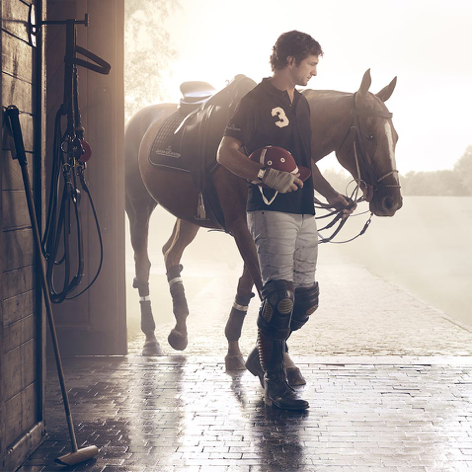
Much has happened since our interview with Eduardo Novillo Astrada in Buenos Aires. The basics of good polo, however, remains the same.
By Camilla Alfthan
SUDDENLY IN 1999 the Novillo-Astrada clan became the focus of attention,when the they made it to the finals of the Argentine Open, and lost by only two goals against Indios Chapaleufú ll.
Alejandro ‘Pikki’ Diaz Alberdi had broken his collarbone, and his replacement never quite managed to enter the match. To most people, the three brothers came out of nowhere, and expectations for the following Abierto were high – however, injured horses and bad weather conditions meant that the Novillo Astradas only made it to the semi-finals, losing by two goals against Adolfo Cambiaso’s La Dolfina.
As it turned out, we had far from seen the last of their Cañada team, named after the polo club, La Cañada; founded by the Novillo-Astradas and, at the time, the largest in Argentina with seventy members.
These days it is the family’s Aguada club which is the talk of the sport with numerous tournaments for all levels, including the traditional La Aguada horse sale.
The first family member to shine on the national polo scene was Julio Novillo-Astrada, who played in the 1930s. Julio held a 5-goal handicap and his son, Eduardo, was a 9-goaler who won the Hurlingham Open and the Tortugas and played the Abierto several times, once making it to the final. Eduardo played with his brother Julio and friends at La Cañada which they had established with a cousin. The club is also where they keep most of their horses, said the eldest brother, Eduardo, when we met during the Abierto in Buenos Aires at the turn of the millenium when there were altogether eight Novillo-Astradas on the fields of play.
Eduardo Novillo Astrada with Clare Milford-Haven and Luke Tomlinson during the British season.
“We started playing when we were very young – about five or six years old. We would stick and ball and ride a lot. We spent our holidays here in Lujan, and also played with our four cousins in the Tortugas country club.”
“Our father would teach us to play, as well as our uncle. We also learned a lot from our groom, Raoul Simerez, who was with the family forever, running the organization.”
“lt’s easier to learn how to play well when you have a good player on the field. We played practice games with teams of 7 to 25-goals, since we were very young. That’s why the young stars get to play so well, because they practise with great talent, and they watch and leam,” said Eduardo who started playing at the Irish Catholic Newman College while competing in the annual Potrillo tournament.
“Our father used to shout at us a lot. He said that we always have to get the man first and then the ball. That’s the golden rule in polo. If you’re looking at the ball trying to get it, the man will get it before you.
But if you worry about him first, you can always get the ball afterwards. All high-goal players can hit the ball very well, so tactics become more important at this level. Also you have to be a very good rider, in order to be a good polo player.
“Just as in a business, you have to know all the levels of the job to be really good.”
For many years we would ride without stirrups, to learn how to use our legs well. I alway say that you have to be a mix of an Indian and an English rider, to combine a natural style with technique.”
Having other interests than polo did not prove to be a problem either. When younger, Eduardo played rugby in the moming and polo in the aftemoon, and then when he was eighteen and had finished school, he opted for polo. He then went on to study business administration at university. Gradually, all brothers improved their handicaps, while getting better horses each year. Their highlight was winning the Triple Crown Open (Tortugas, Hurlingham and Palermo) in 2003 with La Aguada.
In 2014 that was topped when Eduardo won his first match at Palermo with his 14-year old son.
“There are no secrets to being a good player – it is all about consistency,” he said.
“It is a case of playing every week, all year around, with the best people. Some people come to Argentina, and leam for a few weeks and then they leave. But this is impossible; you forget everything that you have learned. Henry Brett, the Gracidas, Mike Azzaro – they all come here to learn for long periods and this has been significant in their progress.
“The way we do it here, is by starting at the bottom. You have to know how to do everything yourself. Our parents don’t give us six horses and a groom – they give us one or two and then we have to manage with that. We take the horses from the paddock ourselves, we feed them, we do everything. We are our own grooms. That’s the only way you can become a good player. Just as in a business, you have to know all the levels of the job in order to be really good. You can’t play high-goal, if you don’t know the basics of good horsemanship.”
For Eduardo and his brothers, polo was always a way of life.
“We fight every ball as if it were the last – this is very characteristic of our family. We have a good defence and we are difficult to beat. We play a lot together and know each other well. That’s a great advantage.” ©
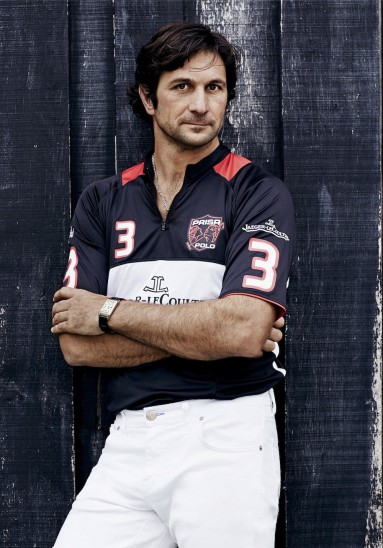 Eduardo models Jaeger LeCoultre’s famous Reverso watch, originally made for a British polo player in India who in 1931 wanted an unbreakable and reversible watch. Ph. Astrid Munoz
Eduardo models Jaeger LeCoultre’s famous Reverso watch, originally made for a British polo player in India who in 1931 wanted an unbreakable and reversible watch. Ph. Astrid Munoz
Eduardo Novillo Astrada on his toughest adversary, Adolfo Cambiaso :
“Had he been a tennis player or a golfer or a football player, he would be better than Federer, Tiger Woods or Lionel Messi. He has won more than Messi. What other sport do you have someone for more than twenty years having number one status?
He’s amazing. I was very lucky and very unlucky to play against the best. He has the kind of anticipation that means he’s one step ahead of everyone. He reads the game so well. Even if you want to get him, he loses you and gets away from you. He gets the ball no matter what,” he told The Daily Telegraph in July 2015.
EDUARDO…
* Divides his time between Argentina and England, where he was born on October 7th 1972, while his father was playing the polo season in the United Kingdom.
* He is the oldest of six children. Of his younger siblings — Miguel, Javier, Ignacio, Alejandro and Veronica — all five boys became professional polo players.
* His sporting commitments forced him to give up studying economics with only two subjects to go before completing his university degree.
* In 1990, at barely 18 years old, he won his first major prize: the Argentinean Republic Cup.
* In 1999 his team suddenly reached the final of the Argentine Open In Palermo, setting the final touch to a season that had brought numerous victories – including the Triple Crown Open.
* Over the past few years, he has also won the British and the US Opens, the Sotogrande Silver Cup and in 2009 he was a finalist in the US Open Championship.
* He has reached a 10-goal handicap and played on world-famous teams such as the La Cañada, Ellerstina and La Aguada – with which he currently plays with his brothers in Argentina.
* In the United States, he is a member of the Zacara and Las Monjitas teams. In the United Kingdom, he plays each year with the Black Bears.
* He is married to the Puerto Rican photographer and model, Astrid Munoz who photographed him for Jaeger LeCoultre.
* He has three sons who all play polo – Justo, Cruz and Lucio.

